-
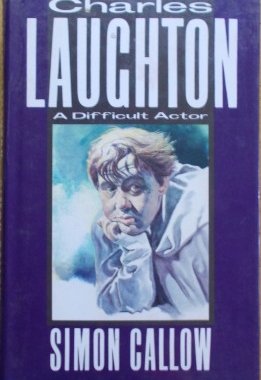 Laughton gifted the world with a number of universally recognised film characters: The Hunchback of Notre Dame, Captain Bligh, Henry Hobson and Henry VIII, as well as the unfinished epic Claudius. This bio traces a fifty year film and stage career; from West End hits and Old Vic classics, to Broadway and Hollywood, working for the great directors and producers of Hollywood. He was described as ugly, difficult and yet magnetic and endured a lifetime battle to come to terms with his homosexuality as well as a thirty marriage to actress Elsa Lanchester. Black and white photos, as well as an intense filmography, playography and bibliography.
Laughton gifted the world with a number of universally recognised film characters: The Hunchback of Notre Dame, Captain Bligh, Henry Hobson and Henry VIII, as well as the unfinished epic Claudius. This bio traces a fifty year film and stage career; from West End hits and Old Vic classics, to Broadway and Hollywood, working for the great directors and producers of Hollywood. He was described as ugly, difficult and yet magnetic and endured a lifetime battle to come to terms with his homosexuality as well as a thirty marriage to actress Elsa Lanchester. Black and white photos, as well as an intense filmography, playography and bibliography. -
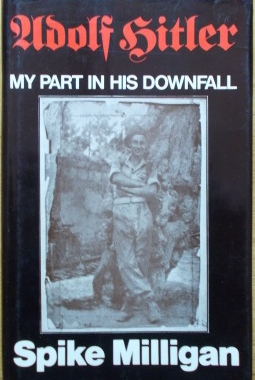 Milligan takes his unwary reader from the outbreak of war in 1939 - 'it must have been something we said' - through his attempts to avoid enlistment - 'time for my appendicitus, I thought' - and his gunner training in Bexhill -'There was one drawback. No ammunition' - to the landing at Algiers in 1943 'I closed my eyes and faced the sun. I fell down a hatchway.' And of course, his mission to cause Hitler's downfall...'At Victoria station the R.T.O. gave me a travel warrant, a white feather and a picture of Hitler marked "This is your enemy". I searched every compartment, but he wasn't on the train...' Loads of bathos, pathos and gales of ribald laughter, this is a barely sane helping of military goonery and superlative Milliganese.
Milligan takes his unwary reader from the outbreak of war in 1939 - 'it must have been something we said' - through his attempts to avoid enlistment - 'time for my appendicitus, I thought' - and his gunner training in Bexhill -'There was one drawback. No ammunition' - to the landing at Algiers in 1943 'I closed my eyes and faced the sun. I fell down a hatchway.' And of course, his mission to cause Hitler's downfall...'At Victoria station the R.T.O. gave me a travel warrant, a white feather and a picture of Hitler marked "This is your enemy". I searched every compartment, but he wasn't on the train...' Loads of bathos, pathos and gales of ribald laughter, this is a barely sane helping of military goonery and superlative Milliganese. -
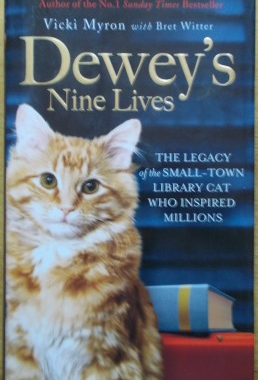
The sequel to Dewey. He was found, an abandoned ginger kitten, on a freezing morning in the Returned Books chute of a American small town library. He moved into the library - and into the hearts of millions of readers the world over. This volume contains Dewey stories not included in the first book. -

 The biography of Arthur Upfield, creator of the famous 'Bony' detective stories. Here is Upfield's own story, the author of those remarkable murder mysteries set in odd corners of Australia and featuring the Aboriginal sleuth named 'Bony' - a detailed 'dossier' compiled with the cheerful candour of the subject himself. An Englishman by birth, Arthur Upfield tried his luck in Australia. After a short spell as a waiter in Adelaide, Upfield felt drawn towards the Interior where he became a boundary-rider, offside-driver, cattle-drover, opal-gouger, rabbit-trapper, vermin fence patroller and manager of a camel station, drifting through the strange terrains and unusual company which were later to become the subject of his novels. He also tells how he unwittingly provided a real outback murderer with a 'fool-proof' method of disposing of a body, and who was the original on whom the character of 'Bony' was based. With a forward by 'Detective Inspector Napoleon Bonaparte'. Illustrated with black and white photographs.
The biography of Arthur Upfield, creator of the famous 'Bony' detective stories. Here is Upfield's own story, the author of those remarkable murder mysteries set in odd corners of Australia and featuring the Aboriginal sleuth named 'Bony' - a detailed 'dossier' compiled with the cheerful candour of the subject himself. An Englishman by birth, Arthur Upfield tried his luck in Australia. After a short spell as a waiter in Adelaide, Upfield felt drawn towards the Interior where he became a boundary-rider, offside-driver, cattle-drover, opal-gouger, rabbit-trapper, vermin fence patroller and manager of a camel station, drifting through the strange terrains and unusual company which were later to become the subject of his novels. He also tells how he unwittingly provided a real outback murderer with a 'fool-proof' method of disposing of a body, and who was the original on whom the character of 'Bony' was based. With a forward by 'Detective Inspector Napoleon Bonaparte'. Illustrated with black and white photographs. -
 Never before had royal authority been so fundamentally challenged. Eight centuries later, 63 clauses of the original Magna Carta are still in use. But this is not a dry treatise of this well-covered historical event: it is also what it was like to live in that momentous year. Fashion, food, religion, sex, education and medicine...Spectacles were invented...windmills were erected...Oxford became the first university and the cathedrals of Lincoln and Salisbury were built. Full of rich detail, from great matters of state to everyday domestic life.
Never before had royal authority been so fundamentally challenged. Eight centuries later, 63 clauses of the original Magna Carta are still in use. But this is not a dry treatise of this well-covered historical event: it is also what it was like to live in that momentous year. Fashion, food, religion, sex, education and medicine...Spectacles were invented...windmills were erected...Oxford became the first university and the cathedrals of Lincoln and Salisbury were built. Full of rich detail, from great matters of state to everyday domestic life. -
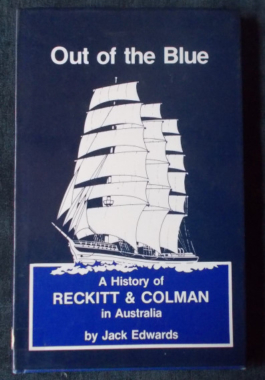 An unusual history of the Reckitt and Colman Company. We all know of 'Reckitt's Blue' for whiter-than-white-whites - those of us of a certain age will remember the 'blue-bag' in the laundry (also a sovereign rememdy for stings and itchy-bites) but the company lines also included Dettol, Disprin, Brasso, Big Sister Cakes, Keen's Mustard, Mortein Flyspray, Orlando Wines and numerous other lines and services. Illustrated with black and white photographs.
An unusual history of the Reckitt and Colman Company. We all know of 'Reckitt's Blue' for whiter-than-white-whites - those of us of a certain age will remember the 'blue-bag' in the laundry (also a sovereign rememdy for stings and itchy-bites) but the company lines also included Dettol, Disprin, Brasso, Big Sister Cakes, Keen's Mustard, Mortein Flyspray, Orlando Wines and numerous other lines and services. Illustrated with black and white photographs. -
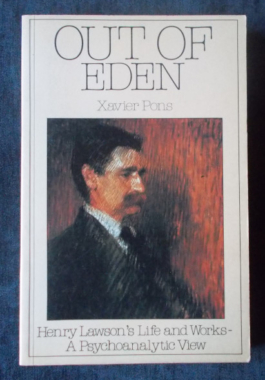 Henry Lawson is still an enigmatic figure in Australian folklore. Both his life and his works lend themselves to widely differing, if not contradictory interpretations. This book, a psychoanalytic view, focuses on clarification of these contradictions and features many hitherto unpublished details of Lawson's life.
Henry Lawson is still an enigmatic figure in Australian folklore. Both his life and his works lend themselves to widely differing, if not contradictory interpretations. This book, a psychoanalytic view, focuses on clarification of these contradictions and features many hitherto unpublished details of Lawson's life. -
 The life of Jean Henri Dunant, the remarkable, dedicated man to whom the Red Cross owes its existence. His 'Good Samaritan' spirit grew and flowered into the idea of a permanent voluntary relief society that would work with absolute neutrality on an international scale. AT first he thought only of relieving soldiers wounded in battle, taking scattered, earlier efforts from history as his guide - but there was also the aftermath of war; outbreaks of disease, permanently disabled men, widows with children. He won the support of sympathetic groups with similar ideas to his own and welded them into a permanent organisation backed by international law.
The life of Jean Henri Dunant, the remarkable, dedicated man to whom the Red Cross owes its existence. His 'Good Samaritan' spirit grew and flowered into the idea of a permanent voluntary relief society that would work with absolute neutrality on an international scale. AT first he thought only of relieving soldiers wounded in battle, taking scattered, earlier efforts from history as his guide - but there was also the aftermath of war; outbreaks of disease, permanently disabled men, widows with children. He won the support of sympathetic groups with similar ideas to his own and welded them into a permanent organisation backed by international law. -
 Hollywood hunk and swash-buckler Stewart Granger tells of his leap to stardom in The Man In Grey and his overnight Hollywood success in King Solomon's Mines. He battled studio bosses, including Howard Hughes, experienced near-fatal accidents in film stunts that he always insisted on doing himself and had very close encounters with wild animals while filming in Africa and India - not to mention the temptation of being thrown together with some of the most beautiful women in the world. This iconic actor tells his story his way -with frankness, modesty and homeliness. Known for heroic sword fighting-roles such as The Prisoner of Zenda and Beau Brummell, Granger says: "I always thought I was big until I played opposite John Wayne in North to Alaska!"
Hollywood hunk and swash-buckler Stewart Granger tells of his leap to stardom in The Man In Grey and his overnight Hollywood success in King Solomon's Mines. He battled studio bosses, including Howard Hughes, experienced near-fatal accidents in film stunts that he always insisted on doing himself and had very close encounters with wild animals while filming in Africa and India - not to mention the temptation of being thrown together with some of the most beautiful women in the world. This iconic actor tells his story his way -with frankness, modesty and homeliness. Known for heroic sword fighting-roles such as The Prisoner of Zenda and Beau Brummell, Granger says: "I always thought I was big until I played opposite John Wayne in North to Alaska!" -
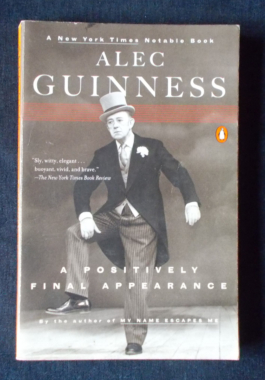 Sir Alec Guinness (1914 - 2000) makes his observations on Britain, taken from his journal at the tumultuous times of Princess Diana's death, the election of Tony Blair and comments on his quintessentially English country life with Mrs Guinness. A follow up to My Name Escapes Me, this volume covers 1996 - 1998. Sir Alec offers frank and surprising reflections on appearing in Star Wars and hilarious reminiscences of Humphrey Bogart and Noel Coward.
Sir Alec Guinness (1914 - 2000) makes his observations on Britain, taken from his journal at the tumultuous times of Princess Diana's death, the election of Tony Blair and comments on his quintessentially English country life with Mrs Guinness. A follow up to My Name Escapes Me, this volume covers 1996 - 1998. Sir Alec offers frank and surprising reflections on appearing in Star Wars and hilarious reminiscences of Humphrey Bogart and Noel Coward. -
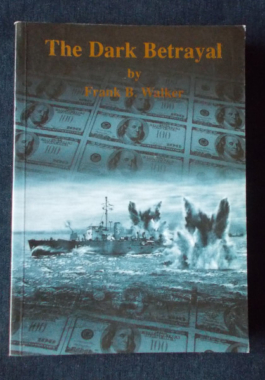
Ken Bartlett, an Australian sailor in a corvette in the Atlantic, took on a cloak-and-dagger mission into Nazi Germany. It was the start of a long and dangerous trail that led him to suspect that Allied firms traded with Germany and Japan during World War II. After arduous service in corvettes in both the Atlantic and the Pacific, he returned to his job as a journalist and followed the scent of the treason trade. This proved even more hazardous, with the FBI, CIA and thugs hired by the double-dealers out to get him. He achieved a victory - yet it was bitter.
-
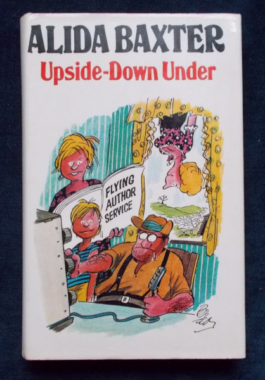
This English author set out to write a sort of a travel book. She couldn't stay home and write about other people's husbands, and everyone she knew was someone else's husband. Even her ex-husband was someone else's husband. So she made the journey to Australia - well out of range of extradition for libel! - and found out about Australians: Where one may and may not swear; what light relief at an opal mine actually was; how to be given a present in a ladies' lavatory in a ghost town; and what it was like to spend a morning with an exhibitionist. Veteran actor Leslie Thomas said: "She is one of the funniest ladies I know." Cover art and illustrations by Bill Tidy.
-
 Published to coincide with the 200th anniversary of European settlement in Australia, this book highlights the 'insider's view' on the history and prehistory of Australia, the effects of the vast deserts and mysterious emptiness of the interior, the rich spirituality of the land to the Aborigines and contrasts between 'old' and 'new' Australia. Illustrated with black and white photographs.
Published to coincide with the 200th anniversary of European settlement in Australia, this book highlights the 'insider's view' on the history and prehistory of Australia, the effects of the vast deserts and mysterious emptiness of the interior, the rich spirituality of the land to the Aborigines and contrasts between 'old' and 'new' Australia. Illustrated with black and white photographs. -
 The true and tragic story of the the disastrous Ballantyne Department Store Fire in 1947 and the terrible injustices heaped on Fire Officer Jim Burrows, who was in command of the fire crew and rescue on that terrible night. Includes part of the 1948 Royal Commission report.
The true and tragic story of the the disastrous Ballantyne Department Store Fire in 1947 and the terrible injustices heaped on Fire Officer Jim Burrows, who was in command of the fire crew and rescue on that terrible night. Includes part of the 1948 Royal Commission report. -

Wandering Girl: Glenyse Ward
$10.00Here is a hidden story and its telling is long overdue. A young Aboriginal girl is released from the spartan strictness of mission upbringing and sent to work as a domestic servant on a property in the wealthy farming district. She is 16 and cut off from all help - a 24 hour captive of an aloof and puzzling family. Her initial reactions are hurt and astonishment but her resourcefulness grows with her experience of life. She's a survivor, despite petty tyranny and humiliating treatment, behaviour so callous it is hard to believe that this true account occurred only in the 1960s and not a hundred years ago. -
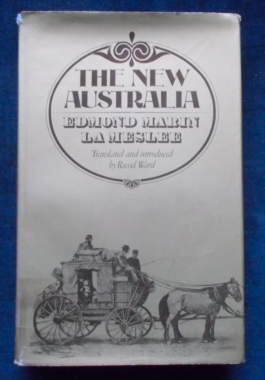
Originally published in 1883, La Meslee saw what Australian and English eyes missed or merely took for granted about the new colony. Melbourne Cup Day; a politician's maiden speech; a coach journey along what is now the Hume Highway; the meeting of two French Counts in Townsville - all these events and more are brought to life again, presenting a fascinating picture of a developing society full of vitality and brash self-confidence. Illustrated with beautiful black and white sketches.
-
 A comprehensive coverage of the subject from an author with 38 years experience in the field. ISBN 0444196439
A comprehensive coverage of the subject from an author with 38 years experience in the field. ISBN 0444196439 -
 This is no conventional biography of Henry Ford - the greatest and most maverick exponent of free enterprise. Rather, it's a fascinating study of Ford's philosophy of business and the strange personal idiosyncrasies of the man himself. Garrett sees Henry Ford for the genius that he was, as an entrepreneur who saw the possibilities and seized on them and of the obstacles Ford faced and overcame. He chronicles Ford's battles with the government and the unions and demonstrates that Ford could move with the times and stay innovative. Illustrated with black and white photographs.
This is no conventional biography of Henry Ford - the greatest and most maverick exponent of free enterprise. Rather, it's a fascinating study of Ford's philosophy of business and the strange personal idiosyncrasies of the man himself. Garrett sees Henry Ford for the genius that he was, as an entrepreneur who saw the possibilities and seized on them and of the obstacles Ford faced and overcame. He chronicles Ford's battles with the government and the unions and demonstrates that Ford could move with the times and stay innovative. Illustrated with black and white photographs.


